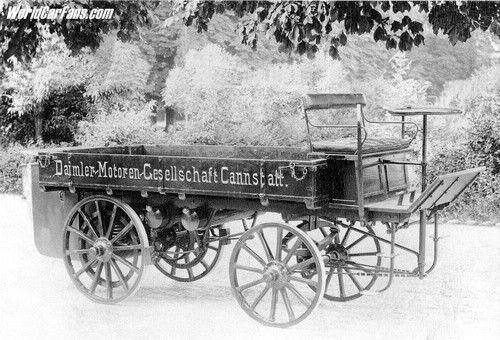A Brief History of Trucking
The trucking industry in the United States has affected the political and economic history the United States in the 20th century. Before the invention of automobiles, most freight was moved by train or horse-drawn wagons.
In the early 1900s, trucks were basically motorized wagons that resembled their horse-drawn predecessors. Trucks didn’t have noses in front of the cab and the motor and other machinery were simply suspended below the driver’s seat. Paved roads at the time were few and far between. Any truck traveling on the roadways rode on solid rubber tires, making the trip very rough and very slow. It wasn’t until around 1920 that most trucks were equipped with pneumatic (air-fill) tires, making the ride much easier on the driver and also allowing the truck to travel at much higher speeds.
There was about 10,000 truck in the whole country in 1912, with many of them being used for deliveries in and around larger metropolitan areas. The Settle Chamber of Commerce sponsored a truck and driver to travel from Seattle to New York City in 1916. This trip showed the manufacturers and merchants of the country that highways and truck transport were going to become major influences in their lives. The trip from Seattle to New York City took a grand total of 31 days!
As motorized trucks became more practical and available, the railroads began losing business to trucking companies. Given the regulatory environment, rail was usually less expensive, but service by truck was far superior in terms of timing.
In 1912, trucks were equipped with electric running lights to allow them to be driven at night and make up travel time that was previously spent sleeping until the morning light. The fifth wheel innovation came to be in the 1920’s, greatly enhancing the speed with which loads could be picked up and dropped off. During this time, the semi-trailer was becoming more popular and this innovation made a huge impact on the way that freight and cargo were transported.
In 1914, there were less than 15,000 miles of paved roads throughout the whole country, but during the next decade the federal government spent $75 million on new road construction along with the improvement of existing roadways.
Trucks were first used extensively by the military during World War I. With the increased construction of paved roads, trucking began to achieve significant foothold in the 1930s, and soon became subject to various government regulations (such as the hours of service). During the late 1950s and 1960s, trucking was accelerated by the construction of the Interstate Highway System, an extensive network of freeways linking major cities across the continent. At this time, diesel fuel was a whopping 14.9 cents a gallon! Quite a difference from the fuel costs of today. Trucks with refrigerated trailers ran them on propane which made it necessary to fill up on propane as well as diesel fuel in order to keep frozen items on ice.
Trucking achieved national attention during the 1960s and 70s when songs and movies about truck driving were major hits. Truck drivers participated in widespread strikes against the rising cost of fuel, during the energy crises of 1973 and 1979, and the industry was drastically deregulated by the Motor Carrier Act of 1980. Trucking has come to dominate the freight industry in the latter portion of the 20th Century, along with what are termed “big-box stores” such as Wal-Mart and Target.
With the growth of the “big-box stores” grew the flow of goods that were being transported. New measures led to a greater demand for new efficient, cost effective and environmentally friendly cargo restraint products. Pallet loads, crates or other items need to be secure to prevent damage during transit. An unsecured load can shift in transit and create dangerous dynamics, damaging the cargo and the structure of the vehicle or intermodal container. To prevent shipment damages and for a more cost effective way to block and brace the cargo, the Logistick Loadbar was invented. The original Logistick Loadbar is a disposable restraint system that is combined with a 2×4 to prevent longitudinal and lateral movements in the trailer with no need to maintain ownership after use.
Check out the new and improved Loadbar Wide ®
As the freight and transportation industry continues to grow we continue to innovate and enhance or products to bring the absolute best in freight securement.
For more information about the history of Logistick and our products visit the About Us section on our website.
References:
http://www.estes-express.com/about-us/truckstart.html



